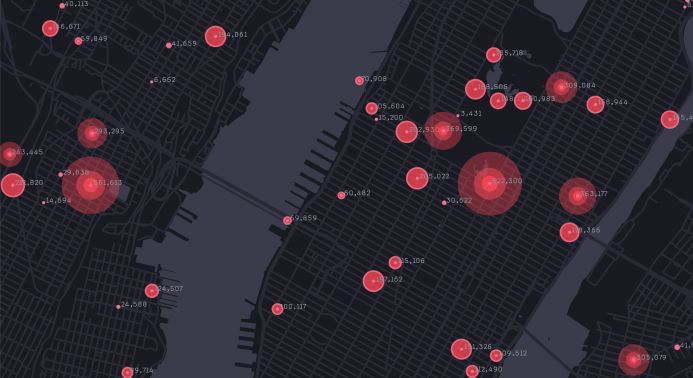Lindsay Keane, Zondits guest, 11/4/2022
Lowering energy costs and reducing greenhouse gas (GHG) emissions in hard-to-reach (HTR) communities are key goals of the Biden Administration’s Inflation Reduction Act (IRA). The bill includes $9 billion for consumer home energy rebate programs, $60 billion for environmental justice (EJ) initiatives in underserved communities, and consumer tax credits for clean vehicles and energy efficient appliances. The IRA is the most significant investment for addressing climate change in federal history, thus program implementers need to think strategically about how to equitably allocate these resources.
In order to realize energy equity goals, methodologies must be adopted to guide and track the delivery of services. Spatial analysis with geographic information systems (GIS) is currently an underutilized method in the energy sector that can be conducted to ensure delivery of services are equitably distributed to HTR communities.
Spatial analysis could play an important role in helping program implementers plan efforts to optimally increase energy efficiency (EE) in households and electrify the transportation sector to reduce GHG emissions. Analysts can use geographic information systems to map energy demand, use, cost data, and more within and across regions. Spatial analysis is a combination of geographic and statistical analysis, which can help analysts quantify patterns observed in spatial data and identify causes of those patterns. These tools are commonly used for city planning, resource management, and business intelligence. In the energy sector, spatial analysis can reveal geographic clusters of high energy burden and identify strategic opportunities for energy program implementers. The insights gained through the use of these methodologies would help guide program design and outreach strategies that increase participation in energy use programs, especially in HTR communities.
Energy equity depends on many factors that correlate with a household’s energy bill, but they are difficult to track. Examining program design through a geographic lens will help implementers determine quantifiable goals, track progress, and provide advanced analytics to stakeholders. Program implementers are then able to build databases that identify patterns in the data and use that data to inform strategy. Although high-income households in the US tend to consume more energy, low-income households spend a higher percentage of gross household income on energy costs. This metric is referred to as “energy burden.” According to the US Department of Energy, the national average energy burden for low-income households is three times higher than for higher-income households. Energy burden varies significantly across US states, census tracts, and even neighborhood blocks. It also tends to be higher in rural counties with larger elderly, disabled, and minority populations. Higher percentages of rental properties and lower rates of insurance coverage are also associated with poverty in these regions.
Two key use-cases demonstrate how spatial analysis can identify geographic areas of need, guide outreach efforts, and increase program participation, especially in HTR communities.
Incentivizing the installation of energy efficient home appliances in HTR communities
Although energy-efficient equipment (e.g., smart thermostats and electric heat pump water heaters) can reduce residential electricity consumption by 13% to 30%, some households are less likely to have access to this equipment at price points within their budget. Various incentive programs have been developed to address cost barriers but typically do not leverage socioeconomic data or the location of households with high energy burdens. Identifying and tracking energy burden indicators requires systems that can capture these complexities.
Using GIS and spatial analysis, program implementers can pinpoint high energy burden hotspots, identify trends, and quickly adapt program outreach strategies as needed to ensure HTR communities have access to efficiency measures that reduce GHG emissions. This allows programs to be expanded to measures such as replacing natural gas and propane cookstoves with electric induction appliances. As a result, program decisions backed by spatial analysis can help direct funding to reduce GHG emissions and promote energy justice in areas with the greatest need – consistent with the goals of the IRA.
Mapping and deploying electrified transportation and electric vehicle (EV) charging infrastructure
Without strategic planning, HTR communities will not likely have access to electrified public transportation or to a widely distributed EV charging network. With new levels of federal funding, new public transportation initiatives and EV sales will rise. Program implementers will need to ensure that the appropriate infrastructure is in place across the country. For example, it is crucial for planners and implementers to collect data that will guide their decisions on what EV charging equipment should be deployed and where to maximize EV adoption.
GIS can be used to store and track data that reflects where the use of EVs is practical due to existing charging stations and identify regions that lack access to the infrastructure that enables EV use. Program implementers can then link and analyze data on EV use, existing EV charging infrastructure, and socioeconomic data to plan EV infrastructure development programs. Strategic decisions backed by this data can help increase program participation and lay the foundation for EV access and equitably deployed infrastructure.
Using spatial analysis and GIS, program implementers can quantify and track program success indicators as well as uncover barriers to residential clean energy measures including EV adoption. With these tools program implementers are better equipped to deliver fact-based analyses to investors and make informed policy-related decisions that help increase program participation and reach environmental and social good targets.
Learn more:
